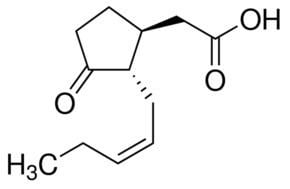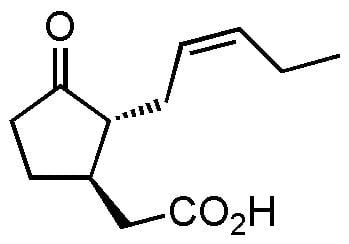Formula C12H18O3 Boiling point 160 °C | Molar mass 210.27 g/mol Density 1.1 g/cm³ | |
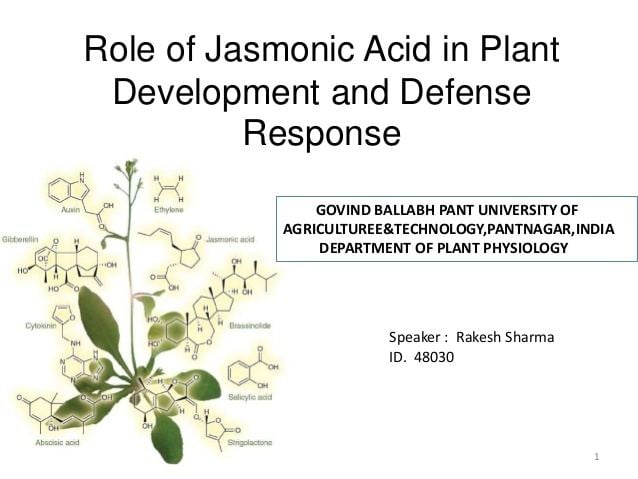 | ||
Jasmonic acid (JA) is an organic compound found in several plants. The molecule is a member of the jasmonate class of plant hormones. It is biosynthesized from linolenic acid by the octadecanoid pathway.
Contents
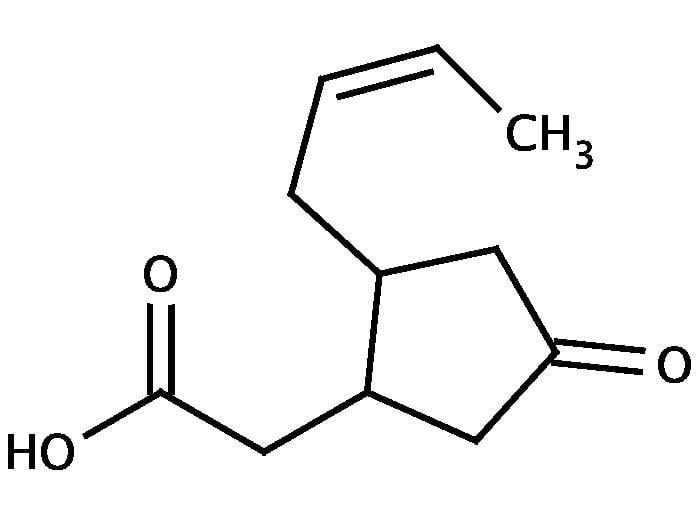
Biosynthesis
Its biosynthesis starts from the fatty acid linolenic acid, which is oxygenated and cyclizes.
Function
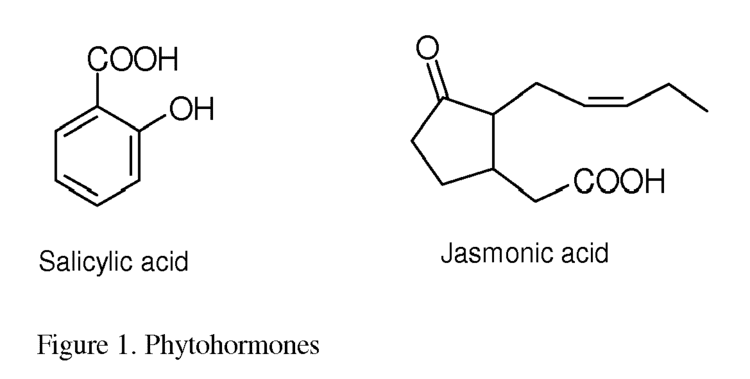
The major function of JA and its various metabolites is regulating plant responses to abiotic and biotic stresses as well as plant growth and development. Regulated plant growth and development processes include growth inhibition, senescence, tendril coiling, flower development and leaf abscission. JA is also responsible for tuber formation in potatoes and yams. It has an important role in response to wounding of plants and systemic acquired resistance. The Dgl gene is responsible for maintaining levels of JA during usual conditions in Zea mays as well as the preliminary release of jasmonic acid shortly after being fed upon. When plants are attacked by insects, they respond by releasing JA, which activates the expression of protease inhibitors, among many other anti-herbivore defense compounds. These protease inhibitors prevent proteolytic activity of the insects' digestive proteases or "salivary proteins", thereby stopping them from acquiring the needed nitrogen in the protein for their own growth.

JA may have a role in pest control. Indeed JA has been considered as a seed treatment in order to stimulate the natural anti-pest defenses of the plants that germinate from the treated seeds. In this application jasmonates are sprayed onto plants that have already started growing. However, due to its antagonistic relationship with salicylic acid (an important signal in pathogen defense) in some plant species, it may result in an increased susceptibility to viral agents and other pathogens. In Zea mays, salicylic acid and JA are mediated by NPR1 (nonexpressor of pathogenesis-related genes1), which is essential in preventing herbivores from exploiting this antagonistic system. An Armyworm like the Spodoptera spp., through unknown mechanisms, are able to increase the activity of the salicylic acid pathway in maize, resulting in the depression of JA synthesis, but thanks to NPR1 mediation, JA levels aren't decreased by a significant amount.
Derivatives
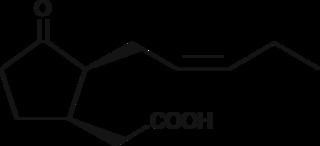
Jasmonic acid is also converted to a variety of derivatives including the ester methyl jasmonate. It is also be conjugated to amino acids in some biological contexts. Decarboxylation affords the related fragrance jasmone.
